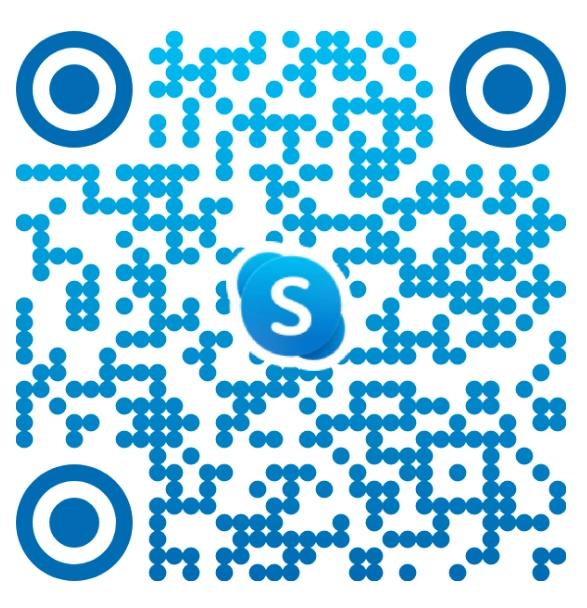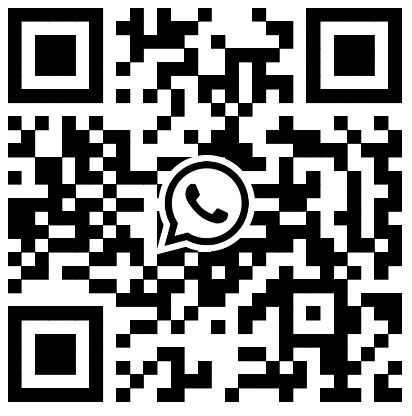Grok vs ChatGPT: What to Choose for AI Workflow Automation and Smart Integrations?
In today’s fast-evolving tech landscape, AI tools have become essential for businesses aiming to streamline their operations, enhance efficiency, and boost productivity. When it comes to choosing the right AI assistant for automating workflows and enabling smart integrations, the Grok vs ChatGPT debate is a crucial consideration for enterprises and developers alike.
This blog offers a comprehensive compare Grok and ChatGPT guide, diving deep into their core features, capabilities, and unique strengths. By exploring the ChatGPT vs Grok AI comparison, we will uncover the key differences that set these AI tools apart and help you understand which one aligns best with your specific business needs. Whether you’re looking for powerful AI automation tools, seamless integration options, or enterprise-ready AI assistants, this article will equip you with valuable insights.
Additionally, we will examine real-world use cases, performance aspects, and how these AI platforms can transform workflow automation through intelligent automation platforms. Understanding these differences is essential for making an informed choice that drives productivity enhancement with AI, tailored to your organization’s goals.
What is Grok?
Grok is a product of xAI by Elon Musk, designed as an AI assistant tailored for workflow automation and smart business integrations. It leverages cutting-edge natural language processing tools to help enterprises automate complex tasks and improve operational efficiency.
Core Features and Capabilities
- Advanced AI chatbot functionality enabling conversational workflows
- Deep integration support with popular business platforms
- Machine learning-based assistants that improve over time
- Focused on enterprise AI assistants for scalable automation
Use Cases in Workflow Automation and Smart Integrations
Grok excels in automating repetitive tasks, managing internal communications, and integrating smoothly with enterprise software. Its AI capabilities enable businesses to reduce manual effort, thus driving productivity enhancement with AI across teams.
What is ChatGPT?
ChatGPT, developed by OpenAI, is one of the most well-known conversational AI tools available today. It uses powerful language models to generate human-like responses and assist in a variety of tasks, from content creation to workflow automation.
Core Features and Capabilities
- High-quality natural language understanding and generation
- Versatile API for integration with many software systems
- Support for both simple chatbot functions and complex automation
- Strong community and continuous updates from OpenAI
Use Cases in Workflow Automation and Smart Integrations
ChatGPT is widely used for customer service automation, internal process management, and smart integrations that connect various software applications. Its ability to understand and generate language helps automate workflows effectively and intuitively.
Key Differences Between Grok and ChatGPT
When comparing Grok vs ChatGPT, it’s essential to look beyond surface-level features and dive into how each tool is architected, the way they understand language, and how they automate workflows and integrate with other systems. Let’s explore the key differences between Grok and ChatGPT to help you choose the right tool for your AI-driven automation and integration needs.
Technology and Architecture Differences
One of the major Grok vs ChatGPT differences lies in their core architecture. Grok, developed by xAI, emphasizes enterprise-specific tasks and is purpose-built to integrate seamlessly with internal tools and systems. It leverages a more task-oriented structure that prioritizes workflow automation and intelligent automation platforms, making it ideal for large-scale, business-specific operations.
In contrast, ChatGPT, built by OpenAI, is based on a general-purpose large language model (LLM). It is trained on a wider dataset, making it highly versatile across domains. While this broad training gives it flexibility, it sometimes lacks the precision Grok offers in enterprise settings. This makes ChatGPT vs Grok AI comparison an important consideration when evaluating tools for specialized tasks.
Natural Language Understanding and Generation
Both tools are excellent natural language processing tools, but their approach and use cases vary. Grok’s AI is fine-tuned to understand enterprise context more deeply, such as interpreting structured business data or managing workflow commands. This focus helps improve productivity enhancement with AI in real-world business applications.
On the other hand, ChatGPT excels in natural language generation across general queries, conversations, and customer service contexts. It’s more adept in broader conversational AI tools scenarios, making it ideal for tasks like content generation, FAQs, or customer support automation.
Workflow Automation Strengths
Grok demonstrates strong capabilities in automating complex business processes. It integrates naturally with AI workflow automation platforms, helping businesses streamline operations like ticket routing, data syncing, and cross-functional task management. This makes Grok particularly strong for enterprise AI assistants and internal task automation.
ChatGPT, while flexible, often requires developers to build and customize workflows using its APIs. It supports automation tools and capabilities, but the degree of out-of-the-box automation is less compared to Grok’s enterprise-focused framework. Therefore, in terms of Grok vs ChatGPT workflow automation differences, Grok may offer a faster setup for internal business operations.
Integration Capabilities and APIs
Integration capabilities are where the difference in features: Grok vs ChatGPT becomes more pronounced. Grok is designed for smart integration options with other software, especially platforms commonly used in enterprise environments. It provides pre-built connectors and API endpoints to support fast deployment within a corporate infrastructure.
In contrast, ChatGPT’s APIs are powerful but designed with developers in mind. They allow for custom solutions and integrations but often require more effort and technical expertise for setup. This means that while ChatGPT capabilities are broad, they may not be as instantly usable for enterprise workflows without developer intervention.
User Experience and Interface
When it comes to user experience, Grok targets business users with a clean, workflow-focused interface. Its dashboards and tools are designed to be intuitive for non-technical users who need to automate tasks or analyze data efficiently.
Meanwhile, ChatGPT’s interface is versatile and user-friendly for both casual users and developers. Its conversational UI is excellent for interactive tasks, learning, or content creation. However, in terms of enterprise productivity, it may require additional tools or plugins to match Grok’s integrated UX.
Feature-by-Feature Comparison
To make an informed decision between Grok vs ChatGPT, it’s important to evaluate them across individual feature sets. This side-by-side ChatGPT vs Grok AI comparison breaks down how each performs when it comes to automation, integration, customization, support, and pricing—helping you choose the best fit for your workflow needs. Partnering with a trusted Custom AI Agents development company can also guide you in tailoring these tools to suit your specific business objectives.
1. AI Automation Tools and Capabilities
When comparing AI automation tools and capabilities, both platforms offer impressive features—but their approaches differ.
- Grok excels in enterprise workflow automation, offering built-in tools tailored for business-specific processes. It integrates well into internal ecosystems, making it an ideal choice for automating tasks like reporting, data processing, and team coordination across departments. Its strength lies in being part of an intelligent automation platform that is purpose-built for productivity enhancement within larger organizations.
- ChatGPT, on the other hand, is a highly flexible AI assistant that can automate a wide range of tasks—from writing emails and summarizing documents to handling customer service chats. While it doesn’t offer the same level of built-in enterprise tools as Grok, its capabilities can be extended significantly with the help of plugins, APIs, and custom workflows. This flexibility is why it’s often recognized as one of the best AI assistant tools available today.
2. Smart Integration Options with Other Software
One of the major differences in integration capabilities: Grok vs ChatGPT lies in how each tool connects with existing software ecosystems.
- Grok AI features and benefits include robust, pre-built connectors for widely used business applications like CRMs, ERPs, and communication tools. These connectors reduce implementation time and simplify smart integrations for enterprise teams.
- ChatGPT’s capabilities and limitations become more noticeable here. It does support smart integration options with other software, but much of this depends on developer input. Using ChatGPT effectively in business environments often involves building custom connectors or using third-party integration platforms like Zapier.
If you’re looking at AI tools for developers, ChatGPT gives more control and flexibility—while Grok simplifies integration for business users.
3. Customization and Scalability
Customization and scalability are crucial when selecting a solution for long-term growth and adaptation.
- Grok is purpose-built for enterprise AI assistants and is designed to scale efficiently within large organizations. It supports role-based access, centralized control, and multi-layered deployment—ideal for corporations managing multiple teams and departments.
- ChatGPT offers scalability, but achieving enterprise-grade performance often requires additional customization and API development. This means businesses may need in-house or outsourced development teams to fully tailor its capabilities.
In terms of how Grok differs from ChatGPT, scalability with minimal configuration is a significant advantage of Grok for large enterprises.
4. Support and Community
Support infrastructure can impact how smoothly an organization adopts an AI tool.
- Grok provides enterprise-grade support, including dedicated account managers, onboarding resources, and SLA-backed technical assistance. This is particularly beneficial for mission-critical deployments where uptime and expert guidance matter.
- ChatGPT benefits from OpenAI’s active global community, extensive documentation, and regular model updates. While it may not offer direct enterprise support in its free or lower-tier plans, businesses using pro-level offerings can access priority support options.
So, when assessing Grok vs ChatGPT for enterprises, support quality and availability are important factors.
5. Pricing and Licensing Models
When it comes to cost, the Grok vs ChatGPT pros and cons difference is noticeable in pricing flexibility and package types.
- Grok typically offers enterprise-focused pricing packages, which are structured for larger organizations. These may include bundled services, enhanced support, and premium integration features—making it a solid choice for those prioritizing business continuity.
- ChatGPT, however, caters to a broader audience. It offers flexible pricing plans, ranging from free access for basic use to professional and API-tiered models suitable for both small businesses and developers. This makes it easier to adopt and scale for startups, freelancers, and mid-sized companies.
If you’re comparing the cost-benefit of Grok vs ChatGPT, ChatGPT may be more accessible to smaller teams, while Grok delivers more value at scale for large enterprises.
How to Leverage Grok and ChatGPT Together for Enhanced Workflow Automation
In the evolving landscape of AI workflow automation, businesses don’t have to choose between Grok and ChatGPT. In fact, combining the integration strengths of Grok with the natural language capabilities of ChatGPT can lead to a highly efficient, intelligent, and scalable automation ecosystem. By partnering with an experienced AI development company and understanding how these tools complement each other, organizations can create seamless workflows, boost productivity, and reduce operational costs.
Understanding Complementary Strengths
Grok excels in enterprise-specific tasks, while ChatGPT brings versatile conversational AI. Together, they enable balanced AI workflow automation—combining structured operations with intelligent dialogue handling—ideal for businesses seeking smart integrations and AI chatbot comparison 2025 insights.Possible Integration Methods and Tools
You can connect Grok and ChatGPT using APIs, middleware platforms, or custom scripts. These methods support flexible automation and highlight differences in integration capabilities: Grok vs ChatGPT, enhancing developer control and workflow fluidity.Use Case Examples of Combined AI Workflow Automation
For example, ChatGPT can manage customer interactions while Grok handles backend automation. This approach suits tasks like HR onboarding or support ticket routing, offering a practical ChatGPT vs Grok use case demonstration for enterprises.Challenges and Best Practices for Integration
Challenges include managing API latency, maintaining data consistency, and training teams. Overcoming these helps businesses harness both tools for AI workflow automation, ensuring reliability in real-time task execution and platform communication.Measuring Performance Improvements
Track improvements by monitoring task speed, user feedback, and automation ROI. Measuring performance helps clarify the Grok vs ChatGPT performance gap and shows which tool—or combo—delivers maximum impact for enterprise-level operations.
Also Read : Perplexity vs ChatGPT: A Detailed Guide to Know the Difference
Use Cases: When to Choose Grok vs ChatGPT
Choosing between Grok and ChatGPT depends on your business needs—Grok excels in enterprise workflow automation, while ChatGPT shines in interactive, conversational AI tasks. Evaluating their strengths helps determine the right fit for smart integrations.
Best Scenarios for Grok
Grok is ideal for enterprise-level workflow automation, especially when deep integration with internal systems and complex task orchestration is required. It excels in structured environments and supports Grok AI features and benefits across scalable enterprise operations.
Best Scenarios for ChatGPT
ChatGPT is perfect for customer-facing chatbots, conversational support, and content creation. It also helps developers with rapid prototyping of AI tools, showcasing its flexibility in creative and service-based applications through the ChatGPT capabilities and limitations spectrum.
Industry-Specific Applications
In finance, Grok’s structured automation is valuable; in healthcare, ChatGPT enhances patient communication. Retail benefits from both—Grok for operations and ChatGPT for user experience—highlighting how ChatGPT vs Grok use cases vary across industries.
Pros and Cons of Grok and ChatGPT
Choosing between Grok and ChatGPT depends on your business needs—whether you prioritize structured workflow automation or broader AI chatbot capabilities. Both tools offer distinct advantages and potential trade-offs when it comes to integration, flexibility, and scalability.
Advantages of Grok
Grok is enterprise-ready, offering strong integration support and focused AI automation tailored for complex workflows, making it ideal for structured environments where seamless system connectivity is essential.
Advantages of ChatGPT
ChatGPT is highly flexible and widely adopted, benefiting from a large developer community and regular updates, which makes it a strong choice for teams needing versatile natural language processing tools with minimal setup requirements.
Limitations of Each
While Grok excels in workflow precision and integration, it may lack the broad adaptability of ChatGPT across creative or casual applications, whereas ChatGPT often requires more development effort and customization to match Grok’s depth in enterprise-specific automation.
Also Read : LangGraph vs AutoGen vs CrewAI: Choosing the Right Framework for Multi-Agent Workflows
Cost-Benefit Analysis of Grok vs ChatGPT
When comparing Grok vs ChatGPT, understanding the cost-benefit ratio is crucial for businesses aiming to maximize their AI investments. Both tools can significantly boost productivity and streamline workflows, but the return on investment (ROI) varies based on your company’s existing infrastructure and specific automation goals. Partnering with an experienced Enterprise AI Solutions provider can further help assess and optimize these investments for long-term success.
ROI Estimation for Businesses
Implementing either Grok or ChatGPT can lead to improved efficiency and cost savings over time. However, the actual ROI depends heavily on how well these AI tools align with your current systems and the complexity of the workflows you aim to automate.
Long-Term Maintenance and Scalability Costs
Grok’s enterprise-focused design usually results in predictable maintenance and scaling costs, making budgeting easier for large organizations. In contrast, ChatGPT’s flexible pricing and API usage can cause variable expenses, especially as demand grows and customization increases.- Hidden Costs to Consider
- Training and onboarding employees
- Customization and integration development
- Ongoing subscription or licensing fees
Future of AI Workflow Automation and Smart Integrations
The future of AI workflow automation is rapidly evolving, with tools like Grok and ChatGPT leading the way in smart integrations and intelligent automation platforms. Businesses are increasingly demanding AI integration solutions that not only automate tasks but also enhance decision-making through advanced machine learning-based assistants.
Key trends shaping these tools include the growing need for AI-powered intelligent automation platforms that streamline complex workflows. Advances in natural language processing and ethical AI practices are also becoming crucial, as organizations prioritize transparency and responsible AI use.
Upcoming innovations include enhanced multi-tool integrations that connect Grok, ChatGPT, and other AI assistants more seamlessly. Expect more natural, context-aware AI capable of deeper understanding, along with expansion into new industries and diverse business functions, driving smarter automation than ever before.
Why Choose Amplework for Your AI Workflow Automation and Smart Integrations?
Choosing the right intelligent automation services provider to implement AI workflow automation and smart integrations is crucial for success. Amplework stands out by offering expert guidance and tailored solutions that help businesses maximize the benefits of tools like Grok and ChatGPT. With deep expertise in AI chatbot functionality and intelligent automation platforms, Amplework ensures smooth integration with your existing systems and customizes AI solutions to meet your unique enterprise needs.
Our team focuses on delivering scalable and reliable AI-driven automation that boosts productivity and streamlines complex workflows. Whether you want to harness the power of Grok’s enterprise-specific capabilities or leverage ChatGPT’s versatile conversational AI, Amplework provides the support, development, and maintenance services needed to accelerate your digital transformation journey. By partnering with Amplework, you get access to cutting-edge AI integration support and a proven track record of successful implementations across industries such as finance, healthcare, and retail.
Final Words
Both Grok and ChatGPT are game-changing AI tools, each bringing unique strengths to workflow automation and smart integrations. Choosing between Grok vs ChatGPT ultimately depends on your business goals, integration needs, and how much customization you require.
If your focus is on enterprise-grade automation with seamless, deep integrations, Grok AI features and benefits will give you the edge. Meanwhile, ChatGPT’s capabilities and limitations offer unmatched flexibility, especially for conversational AI tools that power dynamic interactions.
By understanding the key differences in technology, workflow automation strengths, and cost considerations, you can confidently select the AI assistant that will transform your business operations and keep you ahead in 2025 and beyond.
Frequently Asked Questions (FAQs)
What is the main difference between Grok and ChatGPT?
Grok focuses on enterprise workflow automation with deep platform integrations, while ChatGPT offers a versatile conversational AI designed for broader applications. Grok excels in business-specific tasks; ChatGPT is more flexible but requires more customization.
Can Grok and ChatGPT be used together?
Yes, combining Grok’s integration strengths with ChatGPT’s conversational abilities can enhance workflow automation. With the help of a generative AI solutions provider, businesses can automate complex tasks and customer interactions more efficiently by leveraging both AI tools in tandem.
Which AI tool is better for small businesses?
ChatGPT’s flexible pricing and broad capabilities make it ideal for small businesses needing conversational AI and general automation. Grok is better suited for large enterprises requiring specialized, deeply integrated workflow automation.
What industries benefit most from Grok vs ChatGPT?
Finance, healthcare, and retail often choose Grok for complex, secure enterprise workflows. ChatGPT is preferred in industries needing conversational AI, such as customer service, content creation, and rapid prototyping across diverse sectors.
How do the pricing models differ between Grok and ChatGPT?
Grok typically offers enterprise-focused packages with predictable costs. ChatGPT provides flexible pricing options for developers and businesses, scaling with usage but potentially resulting in variable expenses depending on customization and API calls.


 sales@amplework.com
sales@amplework.com
 (+91) 9636-962-228
(+91) 9636-962-228





